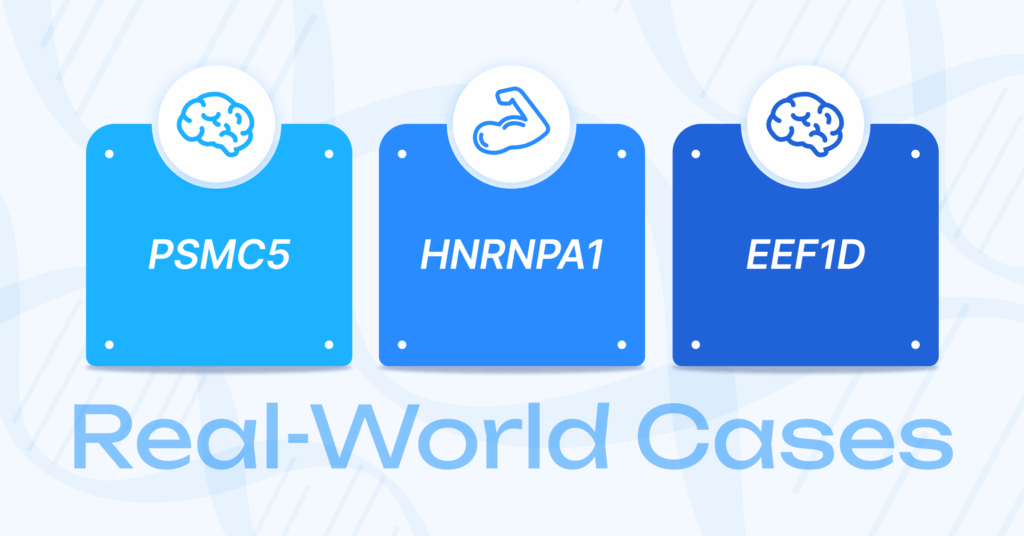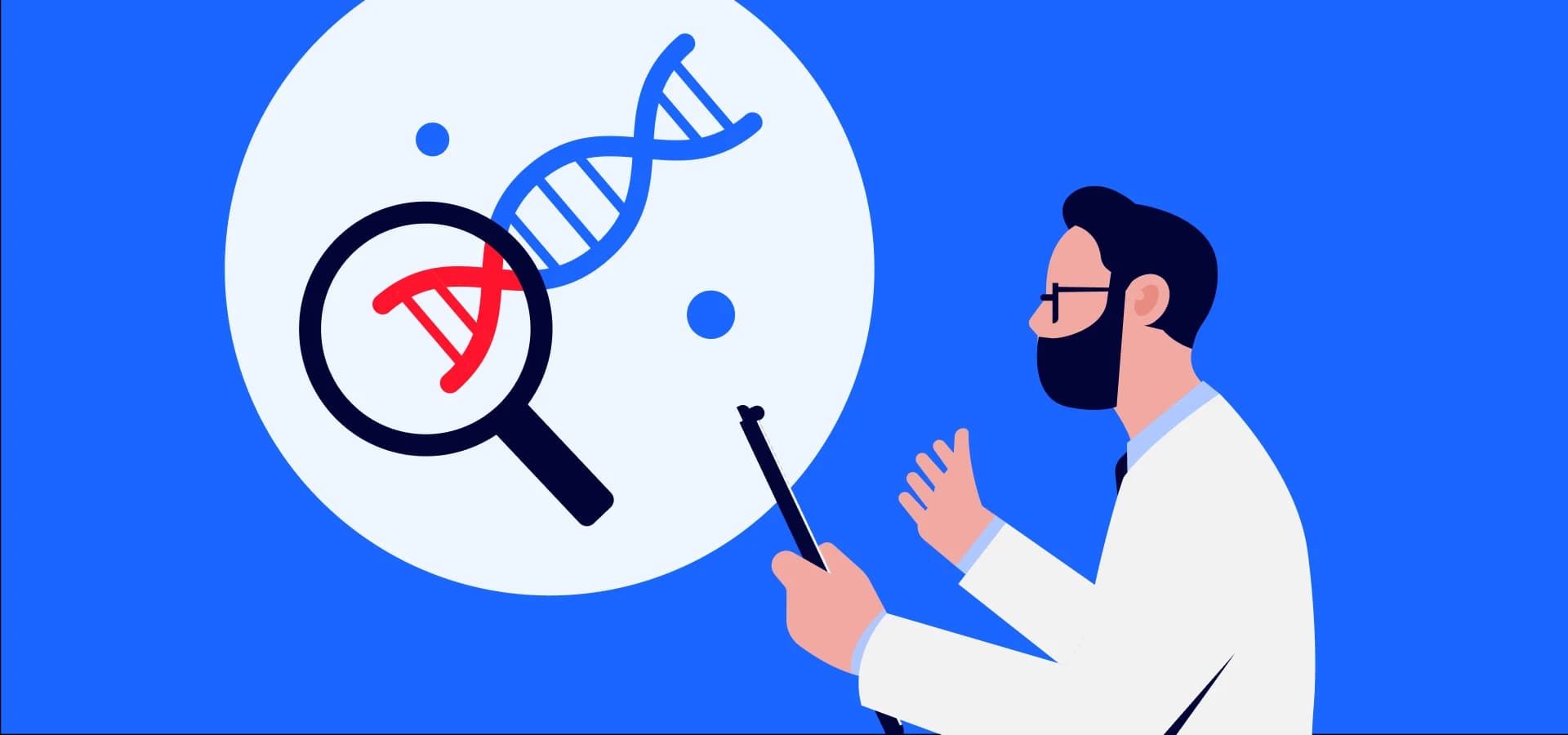Reanalysis in Genetic Testing: Three Case Studies That Changed Patient Outcomes
- Genetic test | 25. 09. 03

What is reanalysis in genetic testing?
Reanalysis is the process of reinterpreting previously generated genomic data in light of new scientific discoveries, updated databases, and improved analytic tools. Unlike a one-time analysis, reanalysis can be continuous—and it can transform a patient’s Negative or Inconclusive report into a Positive diagnosis.At 3billion, we run automated reanalysis daily across tens of thousands of exome and genome samples. Below are three case studies that highlight why reanalysis matters for physicians and patients alike.
Case Study 1: Gene Discovery Through Reanalysis (PSMC5)

- Background: A patient presented with developmental delay, autism, and hyperactive behavior. In 2023, the initial analysis reported Negative, as no link between PSMC5 and disease had been documented.
- Change: In 2024, new research identified PSMC5 variants in patients with neurodevelopmental disorders. The same variant as in our patient was published in the literature.
- Result: The case was reclassified from Negative to Inconclusive, providing scientific support for the patient’s clinical symptoms.
- Why it matters: A gene previously unknown to medicine became relevant, and reanalysis gave new meaning to past data.
💡 Message for physicians: “A Negative result today does not mean the end.” Patients and families can be reassured that data remains valuable as research evolves.
Case Study 2: From Literature to Clinical Recognition (EEF1D)

- Background: Another patient showed motor delay, hypotonia, and a thin corpus callosum. In 2023, only research papers mentioned EEF1D, but OMIM did not recognize it as a disease gene. The case was reported as Inconclusive.
- Change: In March 2025, OMIM officially registered the disorder as “Neurodevelopmental disorder with thin corpus callosum, hypotonia, and absent language.”
- Result: The patient could now be given a definitive Positive diagnosis.
- Why it matters: Information that once lived only in literature became an official diagnostic entity, bridging the gap between research and patient care.
💡 Message for physicians: “Reanalysis is the bridge between academic evidence and clinical practice.” Physicians should keep track of updates like OMIM entries and integrate them into patient management.
Case Study 3: Overcoming Technical Gaps With Reanalysis (HNRNPA1)

- Background: Samples tested in 2020 did not include CNV analysis and were reported as Negative. All patients presented with late-onset distal muscle weakness.
- Change: Upon reanalysis, all six patients were found to carry the same exon 10 deletion in HNRNPA1.
- Result: Six new Positive diagnoses were established at once, demonstrating the critical role of CNV detection.
- Why it matters: Missed diagnoses due to older testing limitations were corrected. As technologies evolve, reanalysis ensures patients benefit without needing to restart the diagnostic journey.
💡 Message for physicians: “As technology evolves, reanalysis saves more patients.” Even past Negative cases deserve a second look with improved methods.
Why Reanalysis Matters for Physicians
Reanalysis is more than a technical process—it changes how physicians approach patient care:
- Negative is not final anymore: Today’s report may change tomorrow as science advances.
- Research-to-clinic pipeline: New discoveries, when incorporated into reanalysis, can immediately inform clinical decision-making.
- Second chance for patients: Families can be counseled that their diagnostic journey is ongoing, not concluded.
- Improved diagnostic yield: As new technologies (e.g., CNV, long-read sequencing) are applied, reanalysis increases the likelihood of finding an answer.
Conclusion
Reanalysis is not about looking back—it is about moving forward with patients. It transforms past data into new diagnoses, provides second chances, and expands the possibilities of precision medicine.
As a physician, one of the greatest reassurances you can offer is:
“The search for a diagnosis does not end here.”
At 3billion, our automated reanalysis system uncovers new answers every day. If you have patients with Negative or Inconclusive results, reanalysis may provide the missing diagnosis.

Struggling with Negative or Inconclusive Results in Genetic Testing?
Download the Reanalysis in Genetic Testing Brochure
Frequently Asked Questions (FAQ)
Q1. What is genetic reanalysis?
Genetic reanalysis is the reinterpretation of existing genomic data using updated scientific information, databases, and analytic tools.
Q2. Why should physicians consider reanalysis for their patients?
Because a Negative or Inconclusive result may become Positive as research progresses and new methods are developed.
Q3. How often should reanalysis be performed?
Many guidelines recommend reanalysis every 12–18 months. At 3billion, we conduct automated reanalysis daily, ensuring no opportunity is missed.
Q4. What makes 3billion’s reanalysis unique?
With more than 70,000 cases, daily automation, and global collaborations, 3billion provides continuous reanalysis at a scale and speed that directly benefits patients and physicians.
Do you find this post helpful?
Click the button below to copy and share the link.

3billion Inc.
3billion is dedicated to creating a world where patients with rare diseases are not neglected in diagnosis and treatment.




